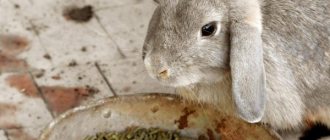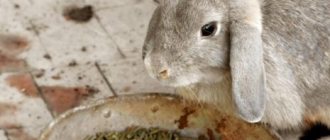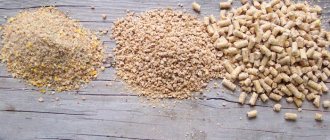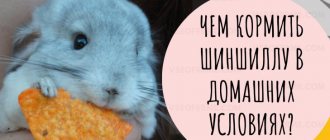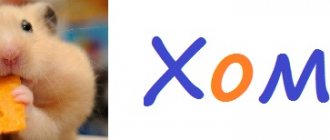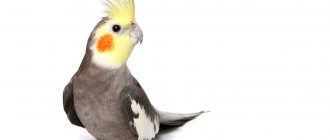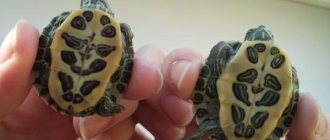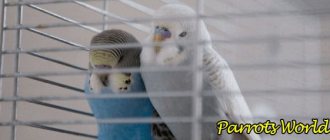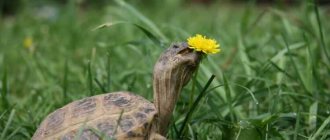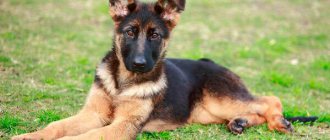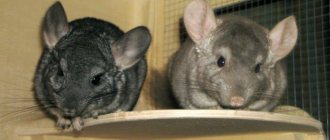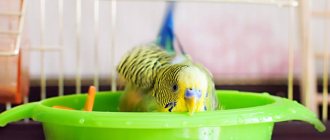- home
- Parrot
- Feeding
10.10.2019 Corella parrots are beautiful and cheerful birds that delight others with their friendliness and cheerfulness. But in order for the birds to feel good, you need to know what you can feed cockatiels and what you should categorically refuse. You can't get by with just grain.
Daily norm
Rule one: food from the owner's diet is not intended for the bird. You need to purchase or prepare balanced food for your parrot from several types of cereals, nuts, and grains. The bird should consume 40 g of cereal mixture per day. We divide the daily norm by the number of feedings and get 10–15 g per meal. This is approximately 1 tablespoon. The cockatiel constantly eats something in the cage, so it should be limited.
To determine the diet of a domestic bird, you need to find out what cockatiels eat in their natural habitat. Their homeland is Australia, and their main food is the seeds of steppe plants. What do Corella parrots like to eat in their homeland? These are mainly cereals, nuts and greens. In addition to natural food of plant origin, parrots catch insects - this is a source of natural protein.
Fresh herbs
A natural source of fiber and vitamins. You can make bouquets of greenery and place them next to the feeder. The cockatiel will happily gut this bunch.
Take precautions! Be sure to pour boiling water over the product before serving. Beware of ticks and other parasites.
For greens, non-spicy herbs without specific odors are suitable. The ideal option is beet and carrot tops.
Basic diet
You can buy store-bought balanced food for parrots. The basis of poultry nutrition is food made from a mixture of cereals. It includes millet, oats, wheat. It is not advisable to purchase mixtures that contain sunflower seeds for daily use. This cereal is too fatty for birds. Birds can eat them no more than once every 7 days. It is not advisable to consume only dry food; other additives are also needed. It is important to choose a balanced food for your pet cockatiel and find out which one is best.
The diet of a cockatiel can be divided into main and additional.
The main foods include cereals:
- wheat;
- millet;
- oats.
The daily diet also includes seeds:
- flax,
- wild flowers,
- sesame,
- hemp,
- sunflower,
- pumpkins.
Several types of nuts: walnuts, hazelnuts, peanuts.
The composition of the mixture is distributed as follows: 30 g of oats and millet, 10 g of canary and sunflower seeds, 5 g of corn and wheat, 1 g of hemp and flaxseed, 3 g of weed seeds. It is important to feed the cockatiel parrot the way it eats in nature.
If the food is prepared independently, the grains must be crushed. This improves the bird's digestion of food. It is preferable to use whole grains in softened form in food for birds, including cockatiels.
Rules for feeding a parrot
It is important not only to properly prepare a diet, but also to feed your cockatiel correctly. The most important question here is how many times a day to feed your cockatiel. The feed rate recommended by the manufacturer is fed once. It is better to do this in the morning, and in the evening the remaining food should be thrown away. Spoiled food can cause poisoning. Every day you need to change not only the food, but also the drinking water. Droppings and debris scattered by active birds can get into it. But feeding the Corella parrot fruits and vegetables during the day is not limited.
Cereals
Millet is good for small pet parrots. Cockatiels choose red millet because it has more nutrients. It will be lucky if you can find panicles of milk-ripe millet. This is a good way to feed the chick.
Oats are the most suitable food for cockatiels. Parrot chicks are fed with young oats of milk maturity, steaming it with boiling water. However, you should not cook the cereal. Adults are given whole grain oats. The feathered one can easily cope with cleaning it from the husk. Sprouted oats are good to include in the diet of individuals during the mating season: vitamin E in its composition stimulates reproductive function.
Canary seed . It is the most suitable and nutritious grain and food for parrots. The proportion of protein in it is up to 20%. Suitable for all types of parrots. Commercial feed contains 30% canary seed. Birds in the disease or molting stage are given half the daily ration. The ratio of nutrients in canary seed and oats is almost the same. These cereals are considered interchangeable; it is impossible to determine which is better.
Corn is the main supplier of coarse fiber and carbohydrates; it contains proteins. The composition does not contain the necessary amino acids, so it is not worth feeding the bird with corn alone. Start complementary feeding with milk cobs.
Hemp is the favorite food of most birds. Corella also eats these grains well. The seed contains up to 30% very fatty oil; it is used for cockatiels at home in the spring and during nesting. The daily norm is 5% of the total volume. Boil for 10 minutes and add to food.
Flaxseed is added to food as a medicinal supplement. It has a laxative effect for cockatiels, so do not consume more than 2% of the daily requirement. Few people know what can be given for stomach diseases in birds. Flax seed in the form of a mild decoction will help. It protects the digestive tract from the effects of whole grain feed. For coughing and hoarseness, use a decoction of flaxseed, adding it to the drinking bowl.
Attention! Exceeding the norm of flaxseed, hemp and sunflower seeds in the daily diet is fraught with metabolic disorders.
Wheat is a valuable grain in bird nutrition. It is not advisable to use unprocessed grain. To feed your home cockatiel, use grain soaked in water or sprouted. This vitamin supplement is necessary during the difficult nesting period, in winter and during feeding of offspring. Sprouted wheat is rich in vitamin E - a valuable additive to feed for poultry and parrots.
Nuts are the cockatiel's favorite food. This delicacy for parrots makes up only 5% of the total food, because the presence of a large amount of fatty oils in the composition can harm the bird.
Important! Exceeding the norm of a variety of nuts in the diet of a home cockatiel can lead to metabolic disorders.
Large nuts must be cracked, and small ones must be completely shelled. A parrot can easily remove a half-cracked shell.
Prebiotics in your cockatiel's diet
A natural prebiotic for cockatiels is clay. This rock restores the intestinal microflora and supports beneficial bacteria. It is necessary to offer clay to birds with poor plumage in the form of balls, beads, or a cake will do. Kaolin can be purchased at a pharmacy, and at home you can use it as follows:
- dilute with water until creamy;
- add flax or sesame seeds;
- spoon the mixture into scones onto the parchment paper;
- place in the oven until hardened, 15 minutes.
The cooled clay mixture will be an excellent medicinal addition to your parrot's diet. Baked clay cake is the cockatiel's favorite treat.
What about people eating?
If you and your family eat healthy and nutritious food, your bird can eat it too. When doing so, follow the general recommendations discussed above and use common sense. Some parrots even enjoy a little lean cooked meat, fish, eggs or cheese on occasion. This is what cockatiels sometimes eat. Dairy products should be consumed in moderation. Common sense - avoid :
- unhealthy, sweet or salty foods,
- chocolate,
- products containing caffeine,
- alcoholic drinks.
Supplement to the diet
Parrots need some greens added to their diet. Dandelions, leeks, and celery are suitable as such additives. As a nutritional supplement, you can offer corn, cookies, and a boiled chicken egg. If you have doubts about the quality of greens, you can grow them at home. It's good to germinate wheat. There will definitely be no doubt about its quality. Wheat sprouts contain a lot of vitamin E, which has a beneficial effect on the health of birds.
It is important to know what to feed your cockatiel at home in winter or spring. You can feed with twigs of pine, linden, birch, and also offer lettuce or spinach leaves.
What to feed the chicks
In normal condition, parent parrots are able to independently feed their offspring. This is the best thing for the health of growing cockatiels. But, often, females can abandon their chicks. In this case, you need to prepare feed.
To do this, take the ingredients and mix until smooth (something like sour cream). The resulting composition must be heated to a temperature of 37-38 degrees. Feeding frequency: every 2 hours, around the clock. Serving size is no more than a pea at a time.
WHAT IS THE CORRECT FEED TO FEED A PARROT. The diet of my cockatiels. Healthy eating for a parrot.
Mix 1
Required:
- baby formula powder – 1 tbsp. spoon;
- semolina – 2 tbsp. spoons;
- calcium – 3 tablets;
- glucose – 3 tablets;
- boiled egg - 2 pieces.
This is a recipe for newly hatched chicks.
Vegetables and fruits
The parrot needs the fruits of various plants as food. You can eat all vegetables without restrictions. As fruits, mangoes and persimmons should not be given to cockatiels because of their astringent properties. It is not advisable to introduce large quantities of walnuts into your cockatiel's diet: they are too fatty for the parrot's body. The fruits are cut into small pieces, each is introduced separately from the other and the reaction is checked. This feeding is given in small portions.
Cockatiels love almost all fruits eaten by humans - apples, pears, apricots. They also eat citrus fruits: oranges, tangerines, lemons. Corellas love berries: raspberries, currants, gooseberries.
Among vegetables, cockatiels prefer zucchini, pumpkin, and carrots. To replenish the body with protein, the parrot is given boiled lean meat. Other protein foods for cockatiels: boiled eggs, cottage cheese, milk.
List of prohibited foods
A varied diet does not mean that birds can be given everything. There are a number of prohibited products that should not end up in the bird feeder to avoid poisoning and digestive upset:
- Fruits include avocado, mango, persimmon and papaya.
- Vegetables include raw potatoes, onions (green and leeks) and garlic.
- All herbs are prohibited.
- Cheese, cream and milk are prohibited from dairy products
- Alcoholic drinks, coffee and cocoa will cause irreparable harm to the health of the bird.
- Chocolates, cakes, pastries will lead to severe poisoning.
- Sausage, smoked meats, and fish are prohibited.
There is no need to risk your pet's health and offer him chips, fried, fatty foods. Sunflower and pumpkin seeds are given to cockatiels only raw. Canned green peas should not be given to birds.
Birds are allowed to fly around the apartment. This means that there is a danger of eating indoor plants. Most of them are poisonous to birds. A parrot will be poisoned if it eats the leaves of Dieffenbachia, geranium, Kalanchoe, aloe, and monstera.
Nutrition during illness
If your pet is sick, you need to reduce the calorie content of its diet and leave only greens. It is good to feed the bird with herbs with medicinal properties during this period.
If a goiter is diagnosed, it is good to water off the parrot with a decoction of willow bark. You can prepare a decoction of calendula flowers. These plants cope well with thyroid pathologies.
If your parrot has diarrhea, it is important to decide what to feed or water your cockatiel. You can offer him a decoction of chamomile or fennel flowers. These medicinal herbs can be purchased at the pharmacy.
In the spring, if there is a possibility of decreased appetite, St. John's wort or plantain leaves are brewed. What can you give if your pet has a blood supply disorder? Strong black tea will help cope with this problem.
Getting to know the cockatiel
Cockatiels are trusting, sociable (but at the same time they do not chatter incessantly and do not make too much noise), they are easy to train and quickly become tame. In this way they are similar to their more famous compatriots - budgerigars. True, a talking cockatiel is a rather rare phenomenon.
The length of the bird is 30-33 cm, weight is about 90 g. Females are light gray in color with brown spots on the cheeks. Males are dark gray with a lemon yellow head and orange cheeks. The tail feathers are dark blue, almost black. The main decoration of both females and males is the crest with olive-green tips of feathers, which is in constant motion, showing the bird’s changing mood. The beak is small, curved down. Young birds have lighter feet and beaks. Recently, several artificially bred colors have appeared - white, yellow and spotted varieties.
Cockatiels can be kept by families; they are compatible with budgies, as well as canaries, weaver birds and other small birds - it is not in their rules to offend little ones. Corellas bite very rarely.
Keeping a cockatiel: what should the cage be like?
When choosing a cage for your cockatiel, do not forget that this bird is active and mobile, and in cramped conditions it will be completely uncomfortable. In addition, in a cage that is not the right size, the bird can injure its limbs. Therefore, the size of housing for one bird cannot be less than 50x40x60 cm, but it is still recommended to provide the parrot with a larger apartment. For a pair of cockatiels you will need a cage measuring 100x40x60 cm, or even better, keep them in a cage measuring 150x60x90 cm, where the parrots can fly.
Unlike cockatoos, the cage does not need to rely on the strength of a cheetah - its frame can be made of wood. But the rods are only stainless or chrome-plated; the sharp beak will send any paint into the stomach. It is better if the cage is longer than tall and stands on an elevated surface - this makes the bird more comfortable. Place several perches at different heights, place branches with bark scalded with boiling water. It is better to attach feeders to the walls - it is more hygienic. Don’t forget about entertainment for the bird - equip the cage with a mirror, a bell, and other toys.
It is best to cover the floor of the cage with sand. If for some reason this is not possible, clean sand should be poured into a bowl.
The parrot loves water baths, so a bathing suit is a must.
Temperature and light conditions
The optimal temperature for keeping cockatiels is 18-25° C. However, one of the features of these parrots is that they tolerate temporary drops in temperature quite well. Of course, you should never keep them in drafts or frost, but a temperature of about +10°C will not harm them.
